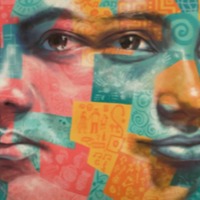
Clara
There are an estimated 403,000 people living in modern slavery in the United States (GSI 2018). Sex trafficking exists throughout the country. Traffickers use violence, threats, lies, debt bondage and other forms of coercion to compel adults and children to engage in commercial sex acts against their will. The situations that sex trafficking victims face vary, many victims become romantically involved with someone who then forces them into prostitution. Others are lured with false promises of a job, and some are forced to sell sex by members of their own families. Victims of sex trafficking include both foreign nationals and US citizens, with women making up the majority of those trafficked for the purposes of commercial sexual exploitation. In 2015, the most reported venues/industries for sex trafficking included commercial-front brothels, hotel/motel-based trafficking, online advertisements with unknown locations, residential brothels, and street-based sex trafficking. Clara* was trafficked at eighteen years old by a man she thought loved her. She was sent to Connecticut where she was forced to work long hours being sexually exploited.

Rebecca
There are an estimated 403,000 people living in modern slavery in the United States (GSI 2018). Sex trafficking exists throughout the country. Traffickers use violence, threats, lies, debt bondage and other forms of coercion to compel adults and children to engage in commercial sex acts against their will. The situations that sex trafficking victims face vary, many victims become romantically involved with someone who then forces them into prostitution. Others are lured with false promises of a job, and some are forced to sell sex by members of their own families. Victims of sex trafficking include both foreign nationals and US citizens, with women making up the majority of those trafficked for the purposes of commercial sexual exploitation. In 2015, the most reported venues/industries for sex trafficking included commercial-front brothels, hotel/motel-based trafficking, online advertisements with unknown locations, residential brothels, and street-based sex trafficking. Rebecca was trafficked in Indiana, USA when she was twenty-one-years old. After being sexually assaulted at the age of fourteen, Rebecca began acting out and struggled with depression, anxiety, and began experimenting with drugs and alcohol. When she was twenty-one, she met a man almost twice her age and moved in with him just three weeks later. The man introduced her to crystal meth, controlled her movement and sold her to men for sex. Rebecca tells of how, despite leaving her trafficking situation, she struggled to come to terms with her exploitation and it affected her life for years afterwards
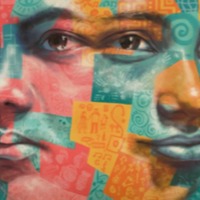
Noel Gomez
There are an estimated 403,000 people living in modern slavery in the United States (GSI 2018). Sex trafficking exists throughout the country. Traffickers use violence, threats, lies, debt bondage and other forms of coercion to compel adults and children to engage in commercial sex acts against their will. The situations that sex trafficking victims face vary, many victims become romantically involved with someone who then forces them into prostitution. Others are lured with false promises of a job, and some are forced to sell sex by members of their own families. Victims of sex trafficking include both foreign nationals and US citizens, with women making up the majority of those trafficked for the purposes of commercial sexual exploitation. In 2015, the most reported venues/industries for sex trafficking included commercial-front brothels, hotel/motel-based trafficking, online advertisements with unknown locations, residential brothels, and street-based sex trafficking. Noel was coerced into becoming a prostitute in Seattle when she was 16. She spent 15 years in the life, trying to escape numerous times and being subjected to physical and sexual abuse on a daily basis. When she was finally able to escape, Noel managed to get a job, a degree and founded her own organisation to help other women and girls subjected to forced sexual exploitation in the city.
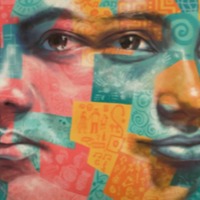
Jasmin A
There are an estimated 136,000 people living in conditions of modern slavey in the United Kingdom (GSI 2018). UK children continue to be subjected to sex trafficking within the country. Children in the care system and unaccompanied migrant children are particularly vulnerable to trafficking.The United Kingdom remains a significant destination for men, women and children trafficked for the purposes of commercial sexual exploitation and forced labour. At least one child a day is trafficked into Britain according the to the Human Trafficking Foundation, with children forced to work in the sex industry, domestic service, cannabis cultivation or as criminal on the streets. Child victims of human trafficking primarily originate from Romania, Vietnam, Nigeria, and from within the UK itself. Jasmin was 13 years old when she was introduced to a man named Nav who was in his 20s. Jasmin began taking drugs and missing school to be with him. One day, Nav raped Jasmin and took photographs. For a year Jasmin was forced to sleep with men to pay off Nav’s debts.
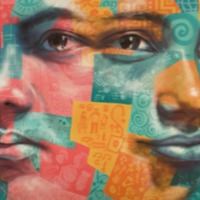
Jamie B
There are an estimated 403,000 people living in conditions of modern slavery in the United States (GSI 2018). Among this number, are children subjected to forced marriage. A study published on child marriage in 2011 determined that the prevalence of child marriage among women in the US was 8.9 percent, meaning that over 9.4 million US women were married at age 16 or younger. Forced marriage and child marriage are understudied problems within the United States and more research is needed to determine what drives its occurrence. Jamie was forced in to an arranged marriage when she was 19, to a man who beat and raped her and abused their children.
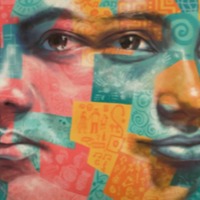
Anna C
There are an estimated 136,000 people living on conditions of modern slavery un the United Kingdom (Global Slavery Index 2018). According to the 2017 annual figures provided by the National Crime Agency, 5, 145 potential victims of modern slavery were referred through the National Referral Mechanism in 2017, of whom 2,454 were female, 2688 were male and 3 were transgender, with 41% of all referrals being children at the time of exploitation. People are subjected to slavery in the UK in the form of domestic servitude, labour exploitation, organ harvesting and sexual exploitation, with the largest number of potential victims originating from Albania, China, Vietnam and Nigeria. This data however does not consider the unknown numbers of victims that are not reported. Anna was living in Albania when she ran away with her boyfriend to escape an arranged marriage. She travelled to Kosovo where she thought she would build a life with the man she loved. However, instead Anna was forced in to a room, locked up and was repeatedly raped by up to ten men a day. Anna was moved from place to place, never knowing where she was. She was finally able to escape while in England and was referred to Hestia.
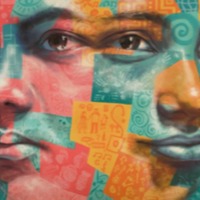
Mardannapalle Pallavi
It is estimated that almost 8 million people are living in conditions of modern slavery in India (GSI 2018). The skewed sex ratio in some regions of India has fuelled the trafficking and selling of women and young girls as brides within India. Women are reportedly sold off into marriage by their families, sometimes at a young age, and end up enduring severe abuse, rape and exploitation by their husbands. It is also reported that women and girls from impoverished backgrounds have been lured by promises of marriage by younger men from urban areas, then forced into sex work once married. Pallavi was forced to marry at the age of 13, giving birth to a baby boy just a year later. After the birth of her son Pallavi worked long hours in the house and in the field, and was subjected to physical abuse by her husband. Pavalli now has 3 sons. Having had no health care through her pregnancies, she is weak, undernourished and depressed. She thinks only suicide will release her.
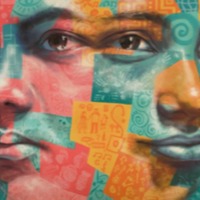
Pilli Pavani
It is estimated that almost 8 million people are living in conditions of modern slavery in India (GSI 2018). The skewed sex ratio in some regions of India has fuelled the trafficking and selling of women and young girls as brides within India. Women are reportedly sold off into marriage by their families, sometimes at a young age, and end up enduring severe abuse, rape and exploitation by their husbands. It is also reported that women and girls from impoverished backgrounds have been lured by promises of marriage by younger men from urban areas, then forced into sex work once married. Pilli Pavani was forced to marry a man against her will and despite his illicit relationship with another married woman. Within a year of marriage, she delivered a baby girl for which she did not receive any food or support. Subjected to physical abuse and with her husband resuming his relationship with the other woman, Pavani finally left her husband.
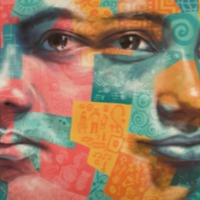
Ruma
The Global Slavery Index 2018 estimates that on any given day there were nearly 8 million people living in modern slavery in India. The GSI 2018 reports an emerging trend in northeast India where organised trafficking syndicates operate along the open and unmanned international borders, duping or coercing young girls seeking employment outside their local area in to forced sexual exploitation. Many women and girls are lured with the promise of a good job but then forced in to sex work, with a 'conditioning' period involving violence, threats, debt bondage and rape. Ruma was trafficked to Mumbai at the age of 11 by her cousin. After spending months working in her house, Ruma’s cousin then sold her to a woman from Kolkata for sex work.

Barbara (Narrative 2)
Sex trafficking is a form of modern slavery that exists throughout the United States. Traffickers use violence, threats, lies, debt bondage and other forms of coercion to compel adults and children to engage in commercial sex acts against their will. Young people who run away from home are particularly vulnerable to sexual exploitation by traffickers: the Department of Justice estimates that 293,000 youth are at risk. The National Center for Missing and Exploited Children (NCMEC) estimates that “1 in 5 of the 11,800 runways reported to the National Center for Missing & Exploited Children in 2015 were likely sex trafficking victims. Barbara Amaya ran away from an abusive home in North Virginia at 12 years old. By the age of 16 in 1972 she had been sent to three detention centres and lived on the streets of Washington DC and New York City. She spent over 10 years as a victim of commercial sexual exploitation where she was forced to work as a prostitute and hooked on heroin. Today Barbara works to bring awareness of the adversity that survivors of violence and trauma have overcome and trains law enforcement, health care professionals, teachers and counsellors how to interact with victims.